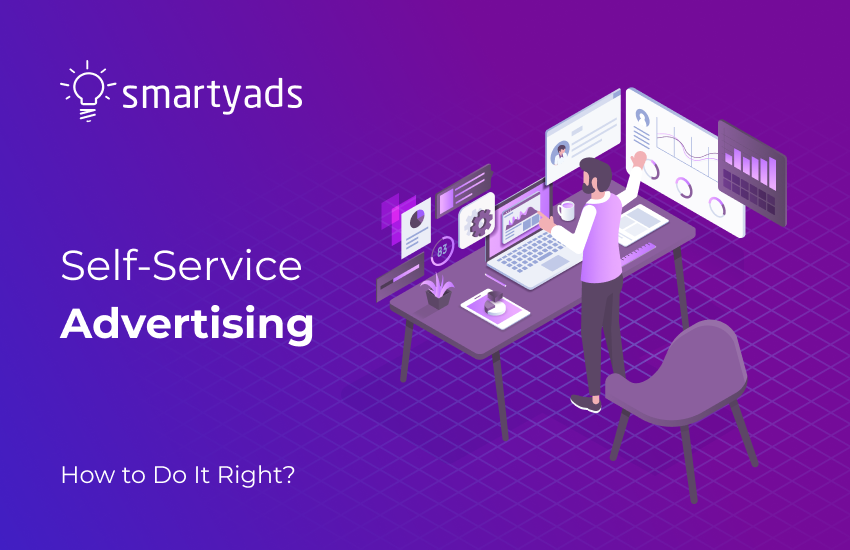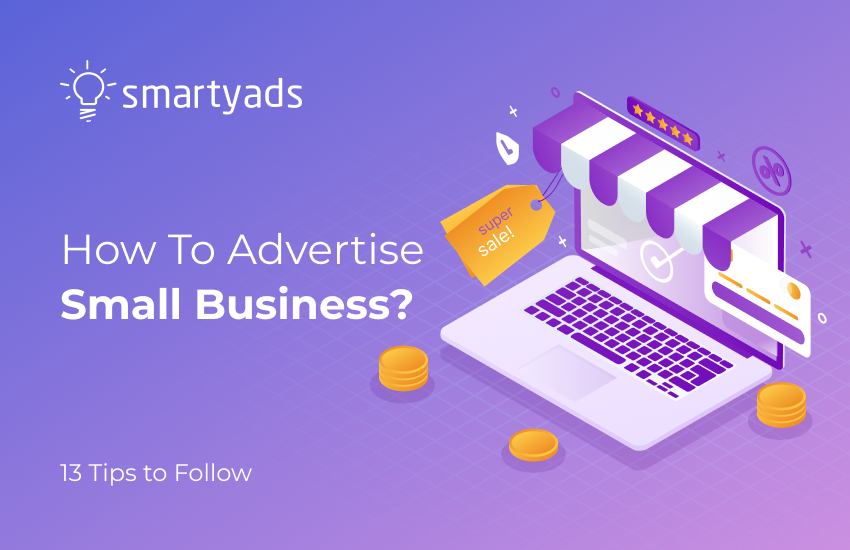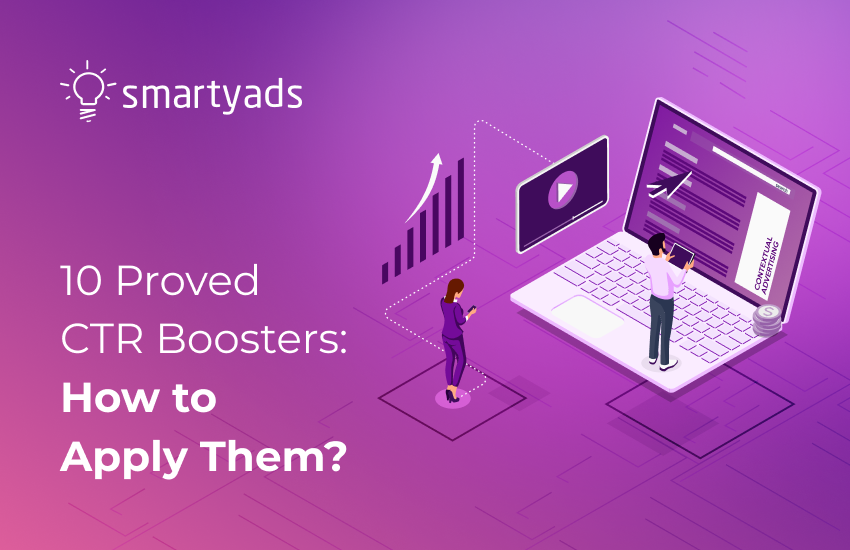Self-service advertisement is dominating the digital ad market in 2024. Such a self-serve ad platform as Google has already connected 7 million advertisers and it continues to grow.
Self-service allows advertisers to display ads where, when, and how they want, without having to deal with a long process of negotiations.
If you want to discover this exciting type of advertisement, continue reading and learn what self-service advertising is, what benefits it offers, and how to create digital advertising campaigns with self-service ad platforms. Let's review self-service platforms and their benefits.
What is self-service advertisement?
Self-service ad is a type of programmatic advertising that refers to publishing ads without human interference (sales reps and hired ad ops).
The self-service platform market accounts for a great part of online advertising services. With a self-serve advertising platform, ad players buy and sell advertising automatically utilizing programmatic algorithms.
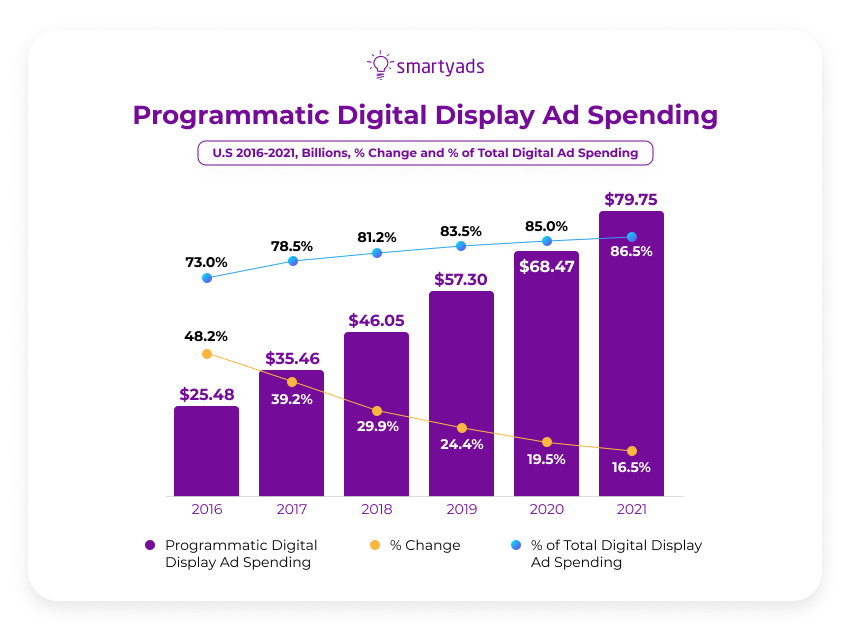
So what can you do with a self-service platform? You just choose a self-service advertising tool, create an advertising campaign, choose targeting, and wait for the approval. That's it, now you are ready to show your own ads at the right time to the right audience.
No sales representative, long discussions, and negotiations involved.
Benefits of self-service advertising platforms
The self-serve advertising platforms changed the face of online advertising, creating a better environment for all parties involved in the digital advertising process. This change was very welcomed considering all the benefits of self-serve advertising platforms.
Manual placements have a rich history but the last decade of years gave birth to programmatic to help advertisers save time and make media trading automated and effective. So let's review what self-service platforms can do for you.
The main idea — all ad operations on a self-service advertising platform are performed by the advertiser through a single platform interface.
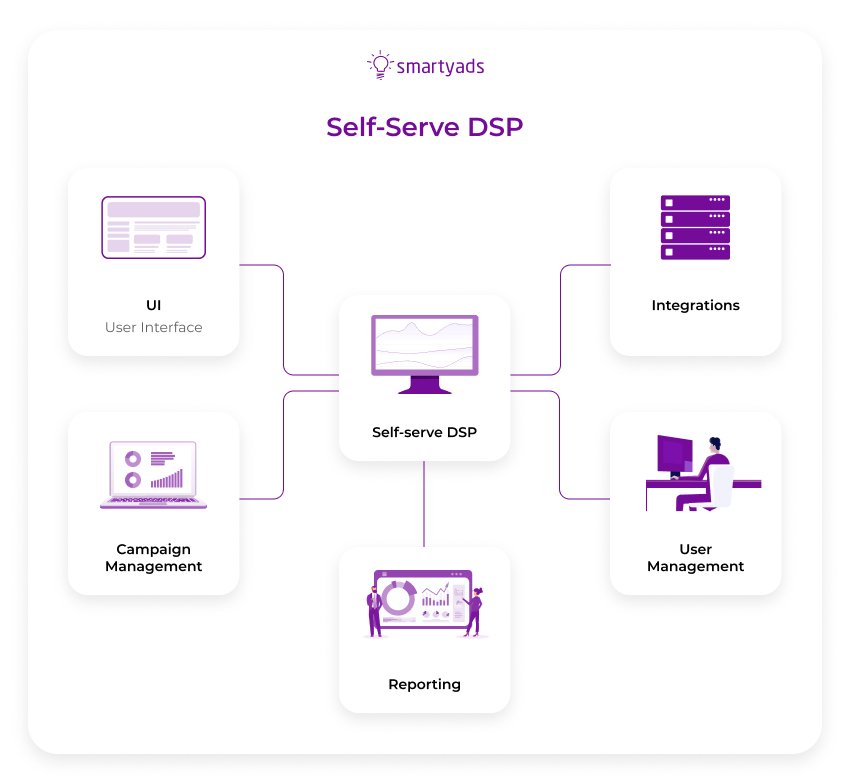
On the managed-serve platforms, meanwhile, the same functions are performed by the manager, however, it implies paying additional costs for controlled campaigns setup, management, and further improvement.
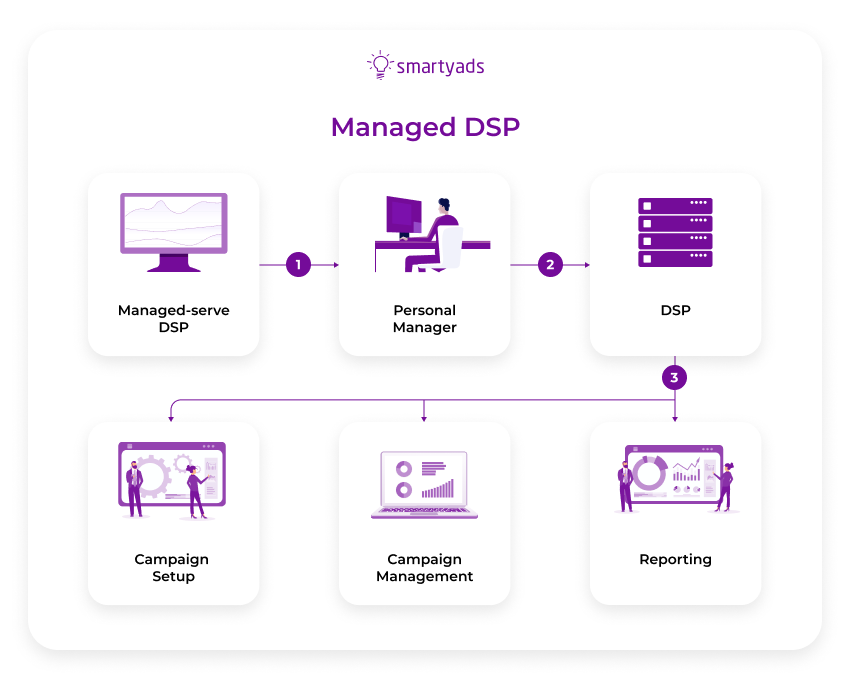
Reduced money and time investment
You do not have to negotiate responsibilities, terms, a suitable ad format (mobile, desktop, connected TV, etc), ad placement, and display time with an ad sales rep when it comes to self-serve advertising. Instead, you can choose whatever you want in a couple of clicks and create the campaign even in the middle of the night.
You can also easily change the terms, ad formats creative, or target audience, without waiting for a reaction from the manager. It saves you a lot of time and allows you to explore more self-serve ad platforms in the meantime rather than spending a lot of effort and time on a single publisher.
The cost of the ad display on a self-service platform is also cheaper so you save money that you can invest in your own campaigns. Using a self-service platform can avoid showing ads to uninterested users and easily configure the ad format for better results with fewer resources spent on searching for the right ad space.
No entry barriers
Publishers usually want to work with big advertisers who are ready to pay big money. This helps them to boost ad sales.
Therefore, they set medium-sized and small companies as their last priority and it can take a lot of time to get an ad spot on self-serve advertising platforms.
Programmatic media buying is more welcoming for businesses with different backgrounds, including small and medium-sized businesses. It gives an opportunity to advertise even to newly-appeared businesses no matter what is the company size overall.
A certain self-service ad platform may have no minimum budget for digital advertising campaigns, and you can launch ad campaigns as small as you can.
Full control over the ad campaigns
If you have a profound understanding of what is the advertising industry, you probably want to fully leverage all its benefits to your advantage.
When you are creating ad campaigns with a self-serve platform, you are in full charge of the process. You can decide what people to show ads to, when, and on what websites, as well as change the setting as soon as you see the need to do so.
Constant development
Self-service advertising technologies never slow down their development. They offer more and more custom performance metrics. The options for further development of such self-service platforms are endless. This is why self-serve platforms are here to stay.
Increased campaign reach
Some publishers usually give you access to one or more websites with a limited number of users and no opportunities to exclude non-target audiences, with a self-serve advertising platform it gets possible.
Using a self-serve advertising platform, you can reach only the right audiences by using targeting options. This way it will automatically exclude non-target audiences from ad serving. You can also follow the user from one website to another with retargeting (on mobile, desktop, connected TV, and other mediums).
More room for experimenting
Self-service advertising tech with its quick changes of parameters, easy swap of creatives, and in-depth analytics, allows businesses to experiment and test what works better.
The famous A/B testing that allows marketers to polish their digital advertising campaigns to perfection became widely accessible just because of self-serve advertising.
Certain ad platforms have in-built A/B testing functionality. So it is easy to experiment with different creatives and messages and discover new audiences and channels through this type of advertisement.
Creating an ad campaign for self-serve advertising platforms:
Self-serve platforms are beneficial as long as you know how to use them for your digital marketing needs.
Otherwise, it might turn into a huge budget waste and ineffective communication. Let's learn how to maximize your ROI with these easy-to-follow steps using the self-serve ad platform.
Know your target audience
Self-service advertisement platforms allow you to target specific types of users so that you do not have to pay for impressions of those who are not interested in the slightest.
Learn about location, age, gender, income, interests, career, pain points, behavior patterns, preferred channels, etc. Some self-service advertising allows you to go as far as targeting users with specific search histories.
You can get data about your target audience by analyzing your current users through Google Analytics or customer surveys, analyzing the audience of your competitors, and defining who is not your target audience.
After you have gathered enough campaign data, we recommend splitting your target audience into 3+ media buyers. It is obvious that not all your users are the same and it is better to create a personalized approach by creating different groups on the self-serve ad platform.
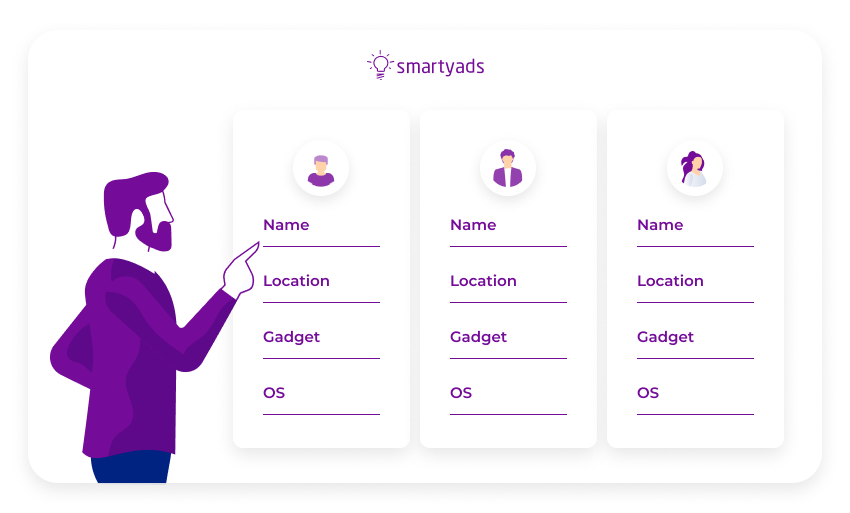
Define your objectives
The message that you channel via the self-serve ad platform will be different for various objectives of your digital ad campaigns and you will be tracking different metrics to understand the success of your campaign.
We also do not recommend combining too many different objectives at once — you may not reach a single objective with such positioning.
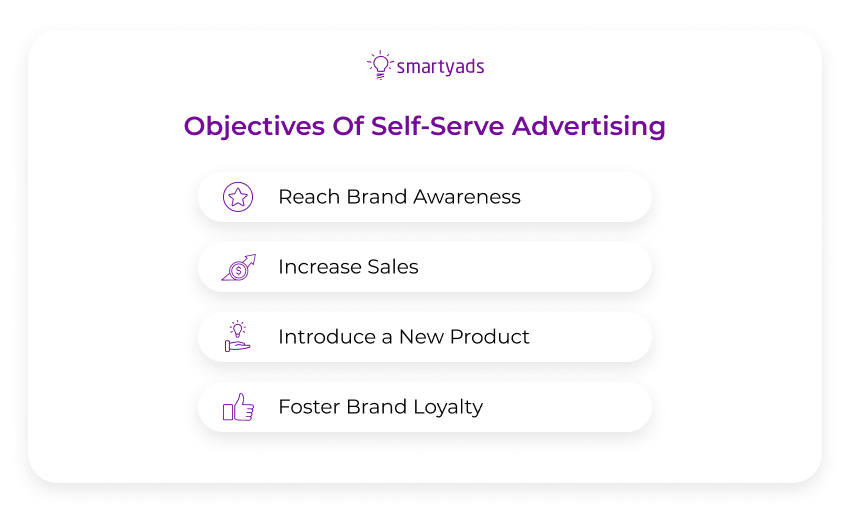
Choose the self-service advertising platform
There are numerous self-serve ad platforms like Google Ads, Facebook Ads, LinkedIn Ads, etc. The platform you choose depends mainly on your audience and their preferred channel of communication.
If you want to reach people outside of Google Ads or large social media, we recommend going for demand-side platforms. Before diving deeper into the benefits of such services, let's learn what is a demand-side platform.
Through DSPs, advertisers can set up highly efficient targeted advertising campaigns and ensure that their ads are displayed only on the relevant websites to the target users at the lowest possible price.
Choose a pricing model
With a self-serve advertising platform, you can pay either for clicks or for impressions.
When you pay for clicks, you do not have to pay for uninterested users looking at your ads. It is suitable for businesses that want to generate leads and sales above all and do not care for exposure that much.
Pay per impression option is for businesses that want to become known. It works especially well for new companies. You are paying per every 1,000 views and it is easier to estimate the budget of this type of campaign. Remember that CPM is considered the best model for the campaigns that are run for raising brand awareness.
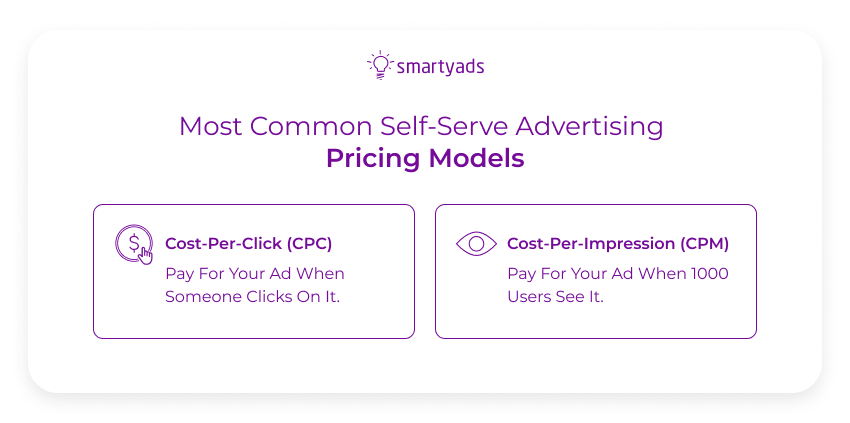
Set your budget
The ad budget is important for businesses of all types but small businesses should probably care about it the most. Right budget distribution is important for your advertising strategy.
If you have never launched an advertisement campaign before, you can consider spending 5-12% of annual advertising revenue. If you are a new company, you will probably need to go closer to 12% in terms of ad revenue rather than 5% to let as many people as possible learn about your brand.
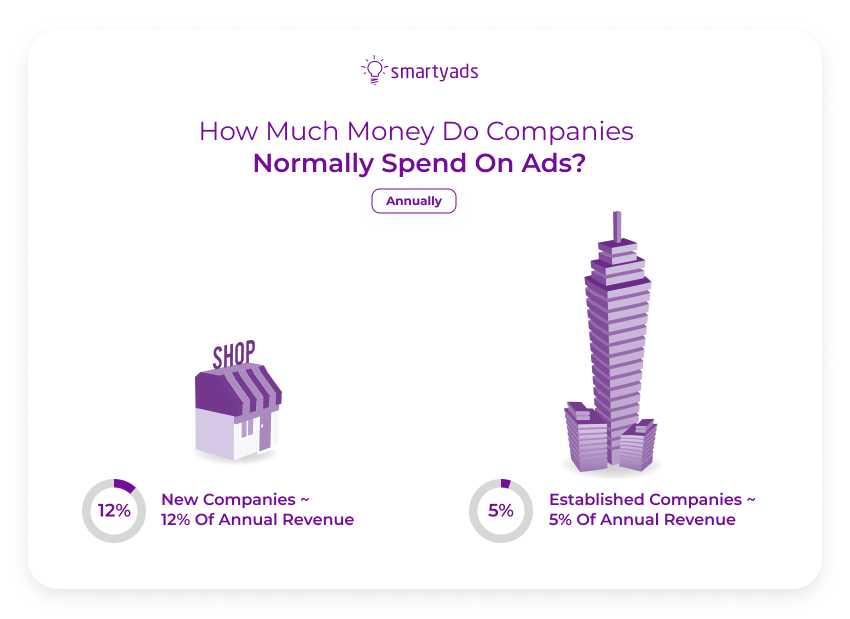
If you have launched an ad campaign before, you should already know what a lead costs. Try to adjust your numbers based on your previous experience and the advertising revenue you want to achieve.
Keep track of your success
If you keep an eye on KPIs, you can notice early signs of an ad campaign flop and redesign your advertisement before your advertising budget runs out without viable results. Keeping the track of your campaign ad effectiveness can also help you understand what things to work on.
You should be definitely tracking these metrics on your self-serve ad platform:
- Return on ad spend. If it is too low, the ad is harming your business rather than helping;
- Cost per conversion. If it takes too much to convert a single customer, you may want to play around with the target audience or experiment with a stronger CTA;
- Impressions and reach. If it is too low, you may want to redefine your bidding;
- Clicks. If users are seeing the ad, but rarely click, it is a sign to redesign your creatives;
- Conversion rate. If the number of those who clicked is high and the number of users who actually bought something is too low, you may want to work on the landing page.
If you need to optimize campaigns towards brand awareness KPI on the CPM advertising platform, your main metrics will be the number of served impressions and CTR.
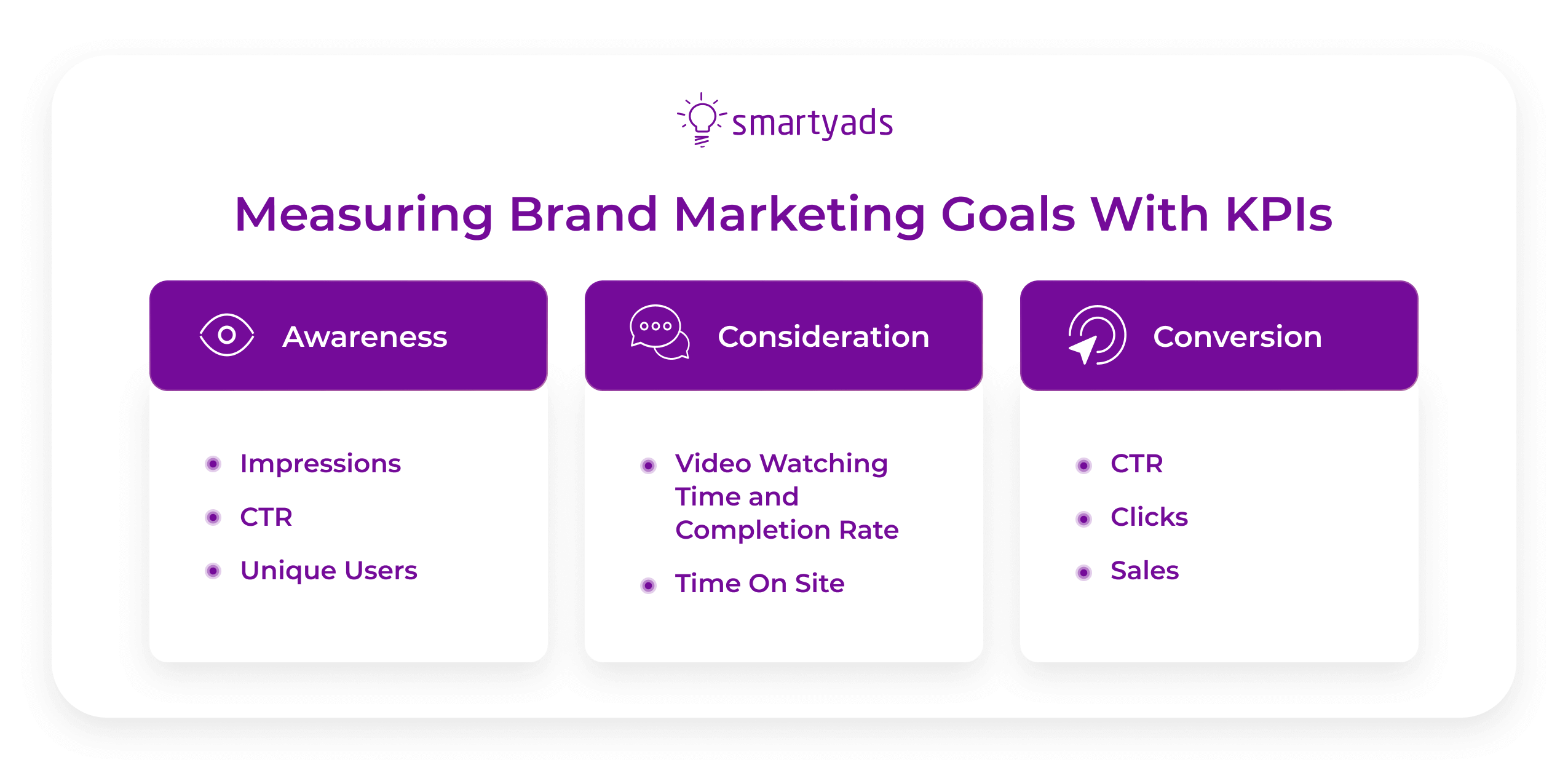
Most of the tools that you need to measure these metrics will be available on the dashboard of your demand-side platform.
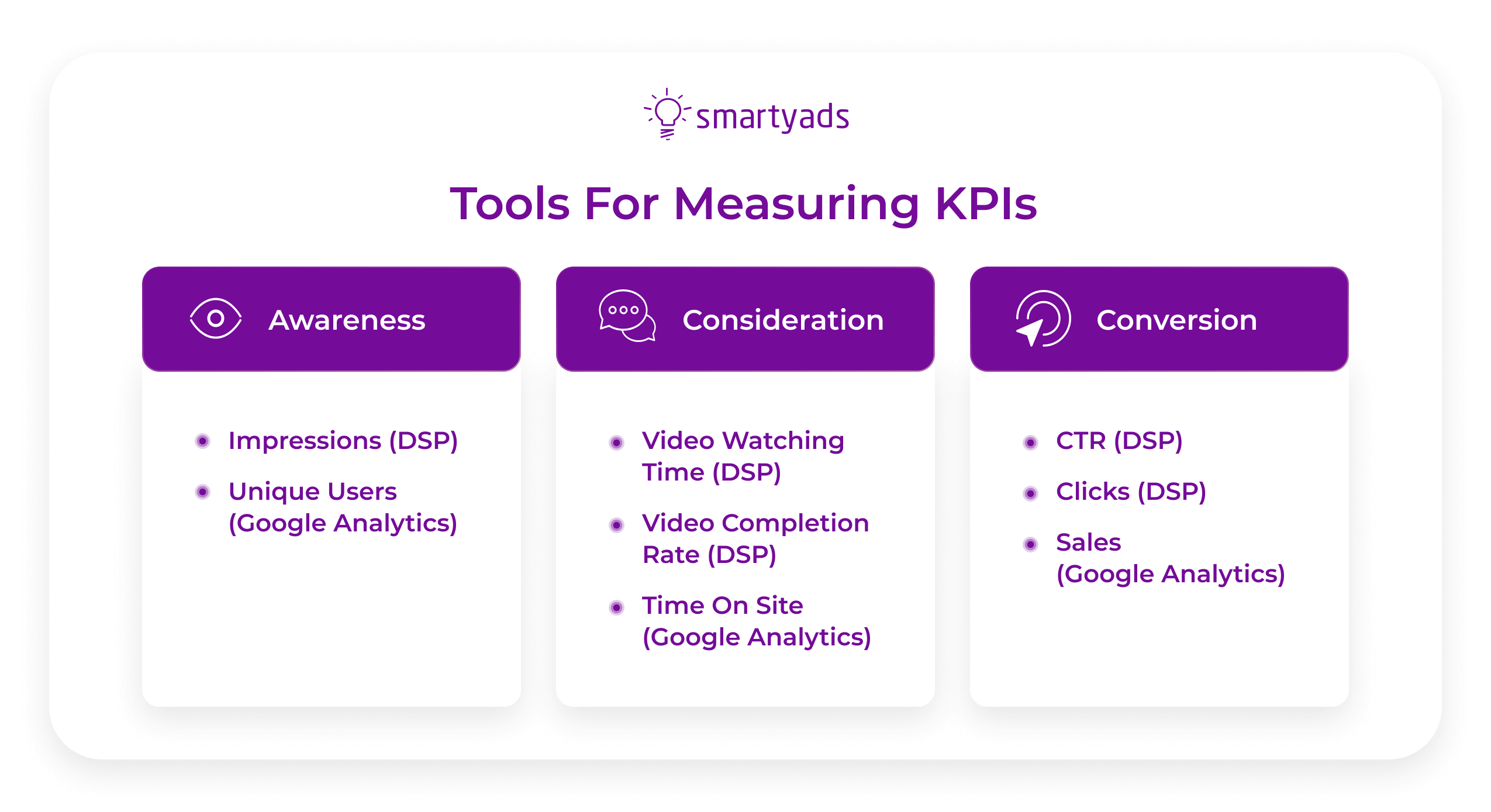
Test and optimize
In the self-service advertisement, it is not scary to make a mistake, it is scary not to fix it. On a self-serve ad platform, you are given great analytics tools for a reason. If your reports wish to be better, you can analyze which metric is flopping and, consequently, what exactly needs to be fixed to increase the campaign's effectiveness.
Afterward, perform A/B testing where you change one thing at a time and use analytics again to define which copy worked better. Save the better copy and change something else about it again. Repeat the process until your metrics satisfy you. In the same way, you can test the campaign schedule.
Do not be afraid to change your initial plans. Your key to successful self-service advertisement is to look at what real-life offers and build your campaigns around that.
Don't be afraid to cut off unnecessary channels and keywords, change your target audience, visuals, time, frequency, CTAs, and landing pages if they don't perform well. Also, refine your targeting with first-party data and continuously test how it performs.
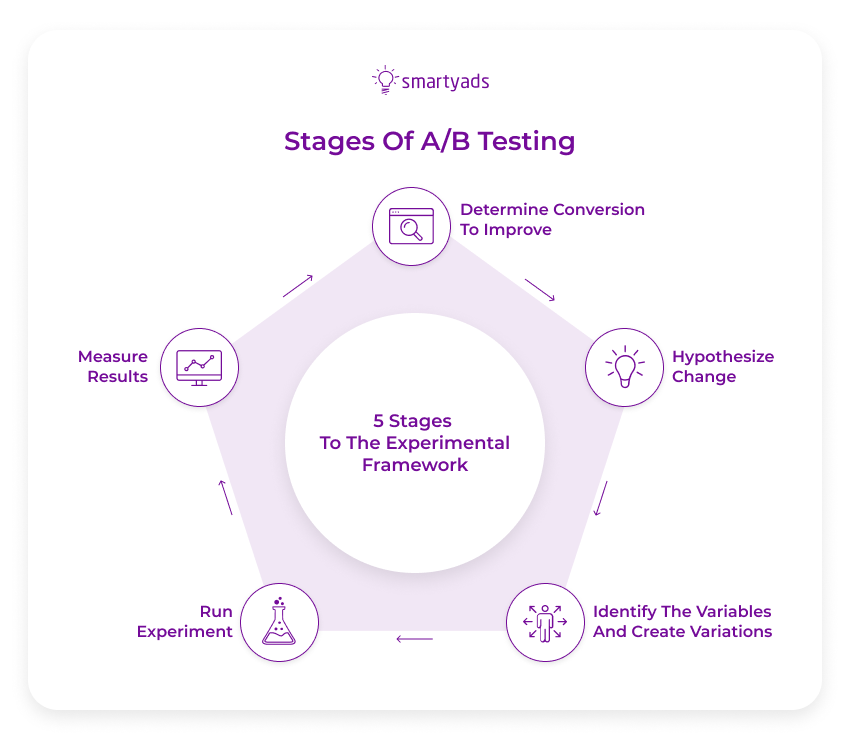
Conclusion
Self-service advertisement has become so popular because of its numerous benefits like fast and cost-effective workflow automation, easy access to publishers for businesses of all sizes, and more room for testing and optimization.
If you are looking for a great place to start your self-service advertisement journey, take a look at SmartyAds. Let us help you choose the self-serve ad platform that suits your purposes best! Join the leading provider of self-serve advertising solutions.
